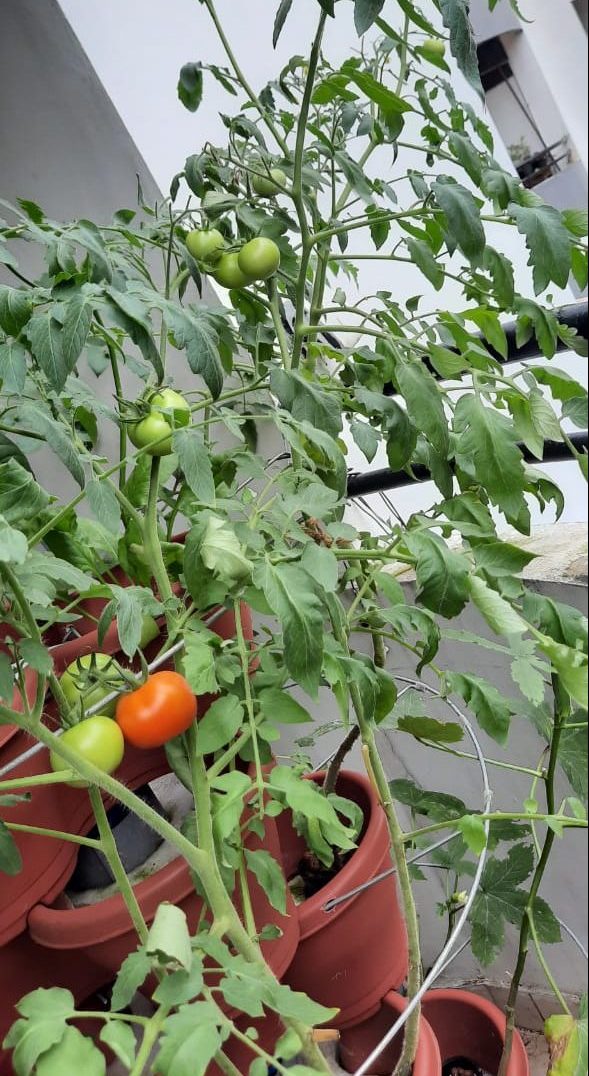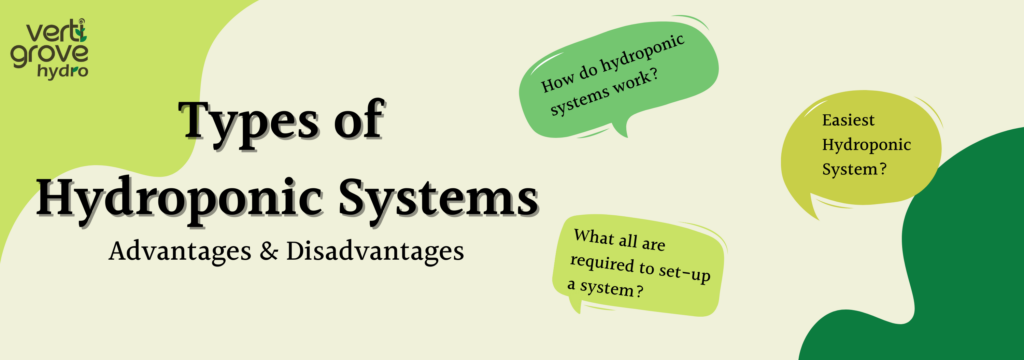
Hydroponic Systems: What & Why?
Hydroponics refers to growing plants in a nutrient rich water solution without soil. It is proven to ensure faster growth,
higher yield and a more nutritious produce. This is simply because the plants are given exactly what they need when
they need it. It is the best way of growing plants for city dwellers who don’t have much land to themselves. Moreover,
hydroponics helps you conserve almost 90% of water in comparison to when growing plants in soil. If you want to read
more about hydroponics and the science behind it, check out our blog – “Hydroponics and its Benefits”.
In India, we are seeing a rise in interest towards hydroponics from home growers. This is majorly because of the recent
shift of people towards cities where you only have a balcony or a small terrace to grow anything. Also, given today’s
busy lifestyle, many find it difficult to grow vegetables or even maintain a garden using traditional methods, i.e., in
pots or grow bags with soil. So, as our way of living changes its only natural that we look for more advanced and
evolved methods of farming for ourselves that is more suitable to our lifestyle.
Requirements for a Hydroponic System
To grow plants hydroponically you will need a couple of basic things:
i. Reservoir : An opaque air tight container. The capacity of the container depends on how many plants you wish to grow. For example, if you are growing small plants like Spinach, you require around 2 litres per plant.
ii. Air pump: This is to provide oxygenation for better nutrient absorption.
iii. Net pots: These are required so that the roots can easily grow out of the pot. Net pots are available in various sizes: 2″, 3″, 4″, 6″, etc. Most commonly used one is 2″ diameter netpots.
iv. Clay Balls/Rockwool/Coco peat/Foam: These are to hold the plant firmly in the pot. The main requirement is that it should be able to hold moisture and shouldn’t alter the pH of the solution.
v. Hydroponic Nutrients: Hydroponic nutrients should consist of all the essential elements required for plant growth as the plants are completely dependent on it. Plants mainly require Nitrogen, Phosphorous, and Potassium (N-P-K) along with a
range of micro and macro nutrients. Hydroponic nutrients are available in different ratios of the required elements.
vi. TDS Meter: A TDS (Total Dissolved Solute) meter is used to measure the nutrient concentration in the solution.
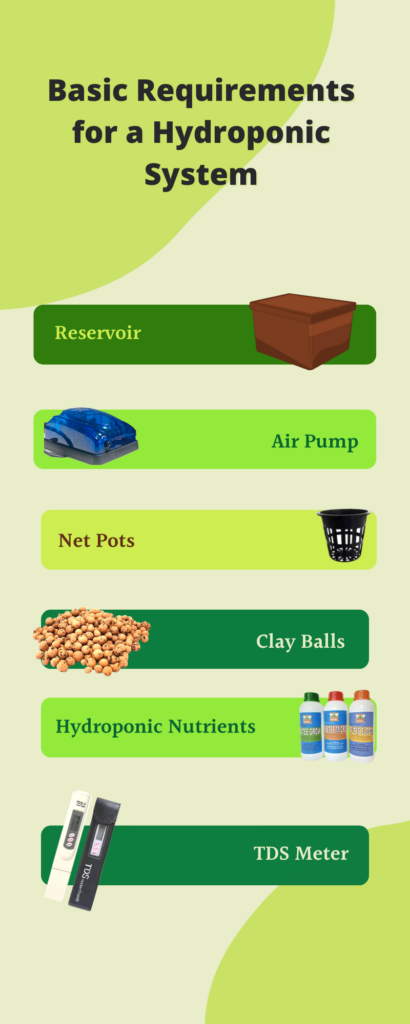
If you want to set-up a hydroponic system on your own for your home, the easiest type is a Deep-Water Culture (DWC)
System (Explained in detail below). In a DWC system you can grow small plants such as Mint, Spinach, Amaranth, Kale,
Lettuce, etc. You can get seedlings of the plants of your choice from a local nursery and simply wash the soil of the
roots and place it in your system.
There are different types of hydroponic techniques: Deep Water Culture, Nutrient Film Technique, Aeroponics, etc.
Our system- Vertigrove-hydro uses a combination of DWC and NFT technique for optimum results. Let’s get into the
details of each technique and understand their respective set of advantages and disadvantages.
Types of Hydroponic Systems
1. Deep Water Culture (DWC)
DWC is ideal for beginners as it is the simplest way to start learning hydroponics. The plants in net pots are placed on the lid of the reservoir such that the roots are dangling inside. The reservoir will be filled with nutrient rich oxygenated solution. The solution is oxygenated using the air pump and stone. Since the plant roots are submerged in water constantly proper oxygenation is very essential.
You need to ensure that only the plant roots are exposed to the nutrient solution and not the stem or any vegetative part of the plant.
It is also advised to maintain the water level in the reservoir such that about an inch of the root remains above the waterline.
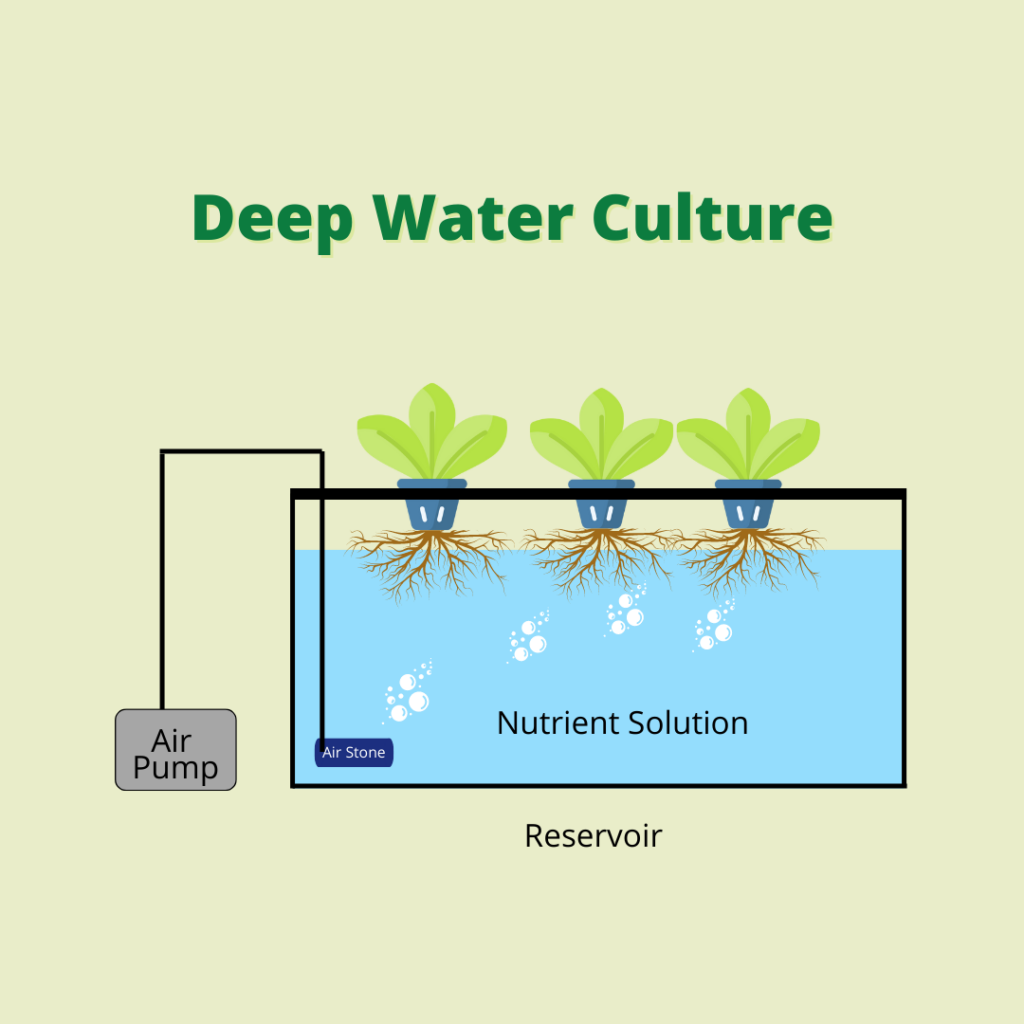
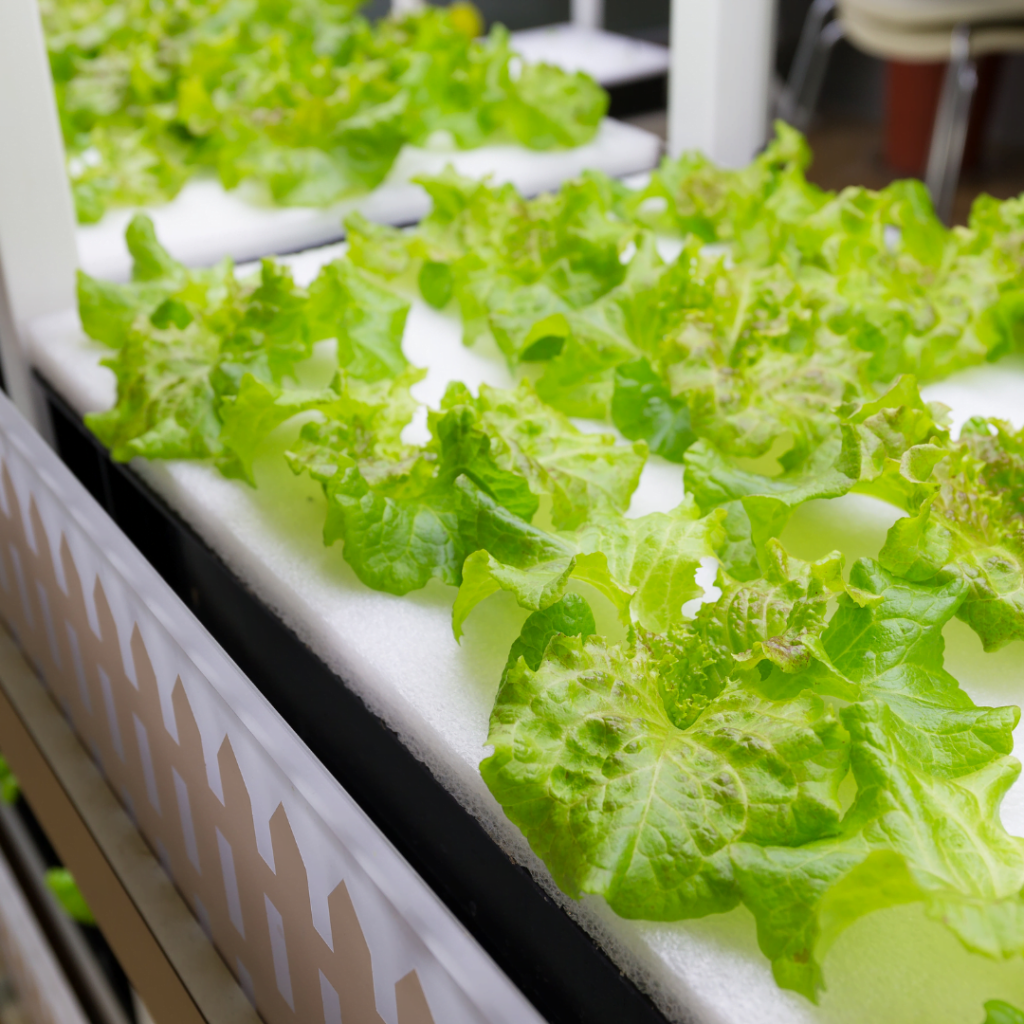
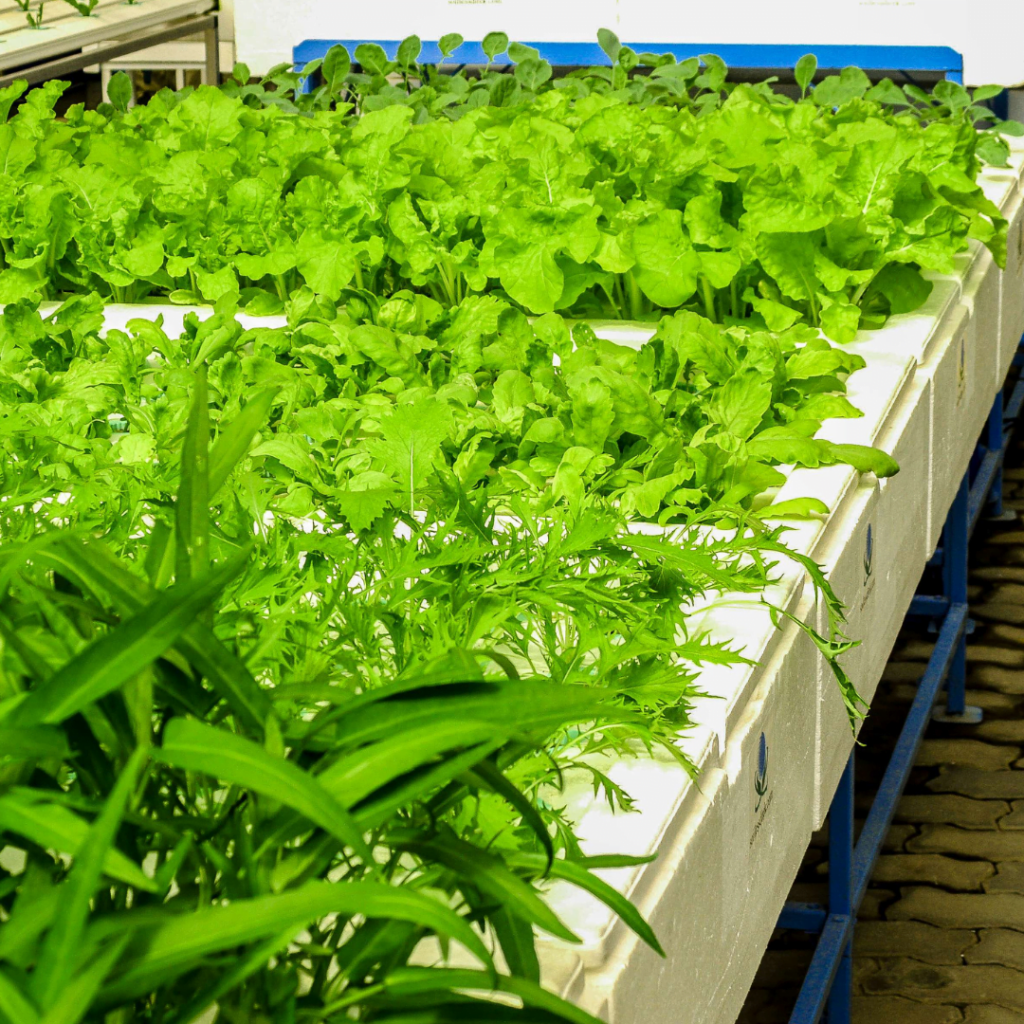
Advantages
- Budget friendly system that can be easily made at home.
- Ideal to learn hydroponics
- Very Low Maintenance
Disadvantages
- DWC systems are only good for growing herbs and leafy vegetables. It is not recommended for growing
any kind of flowering or fruiting plants. - If the air pump does not work for a long time, the plants will suffer.
2.Nutrient Film Technique (NFT)
Unlike in DWC systems where the plant roots are completely submerged in water, in an NFT system the plant
roots are exposed to only a thin stream of nutrient rich solution that is constantly being circulated.
An NFT system consists of a reservoir with rectangular or cylindrical channels to hold plants connected to it. Plants in net-pots are placed on the channel such that the roots are inside. A submergible pump is placed in the reservoir which will pump the solution to the channels. The channel is placed slantingly such that the solution flows downwards and back to the reservoir. An air pump and stone are also placed in the reservoir to ensure proper oxygenation.
A thin stream of the nutrient solution passes through the channels such that only the edge of the plant roots is in contact with it. This also means that a good part of the roots is exposed resulting in plenty of room for oxygen. NFT systems are very popular among commercial growers. These are mostly suitable for light weighted plants like lettuce, kale and spinach. To grow heavier fruiting plants, you would require to provide extra plant support.
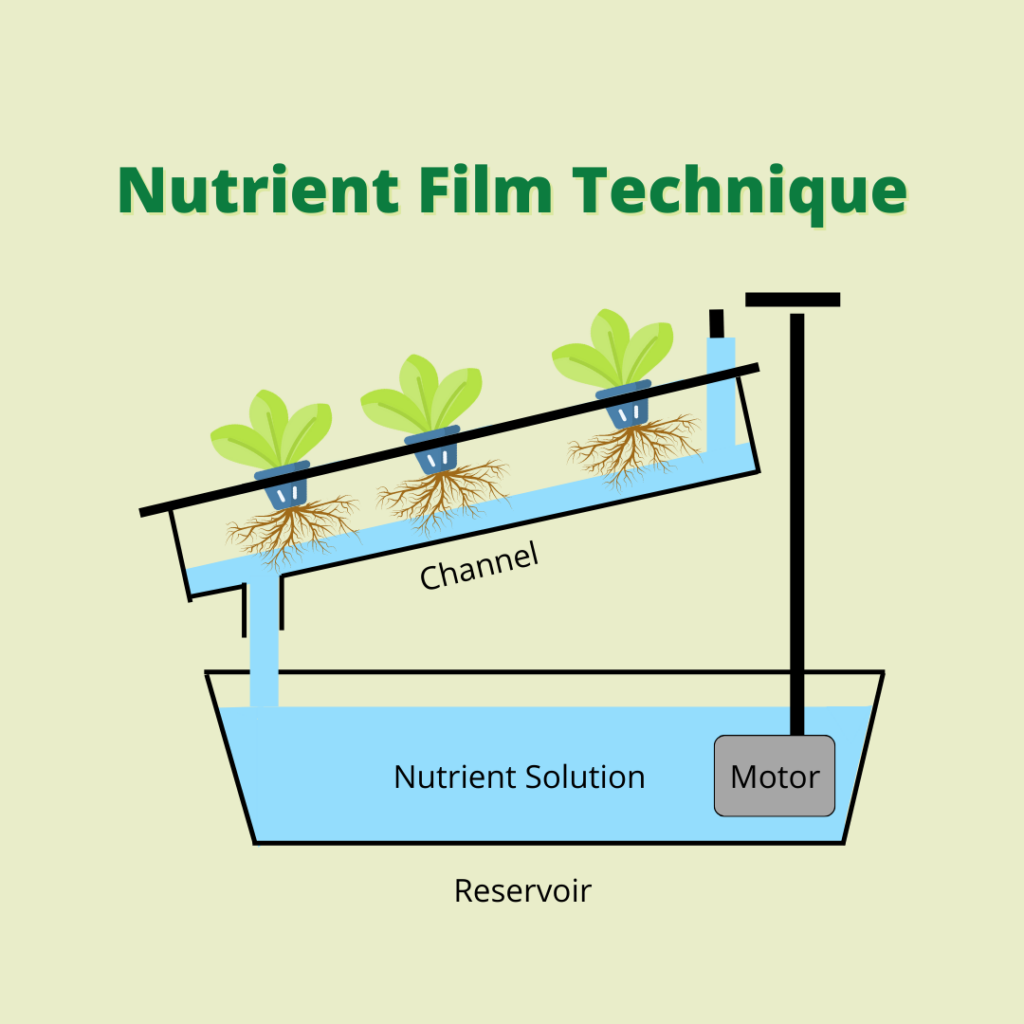
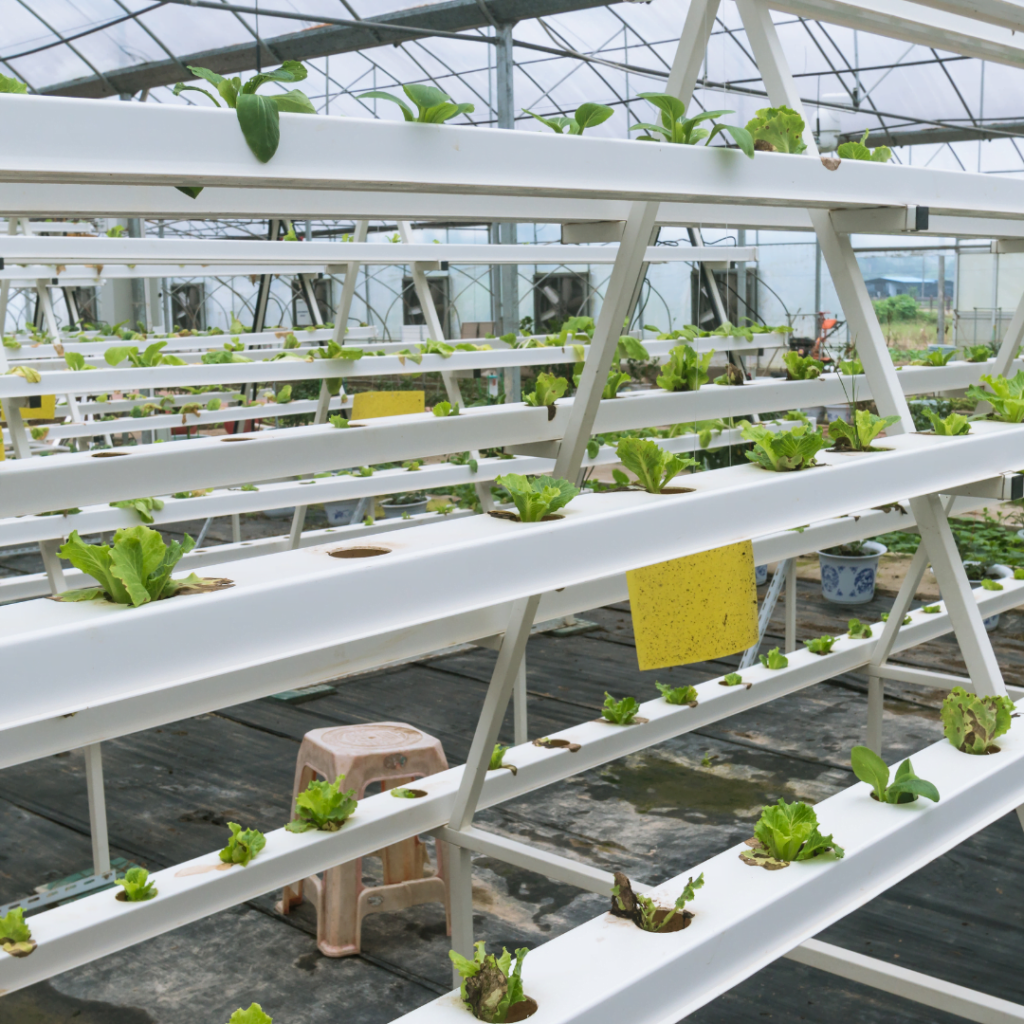
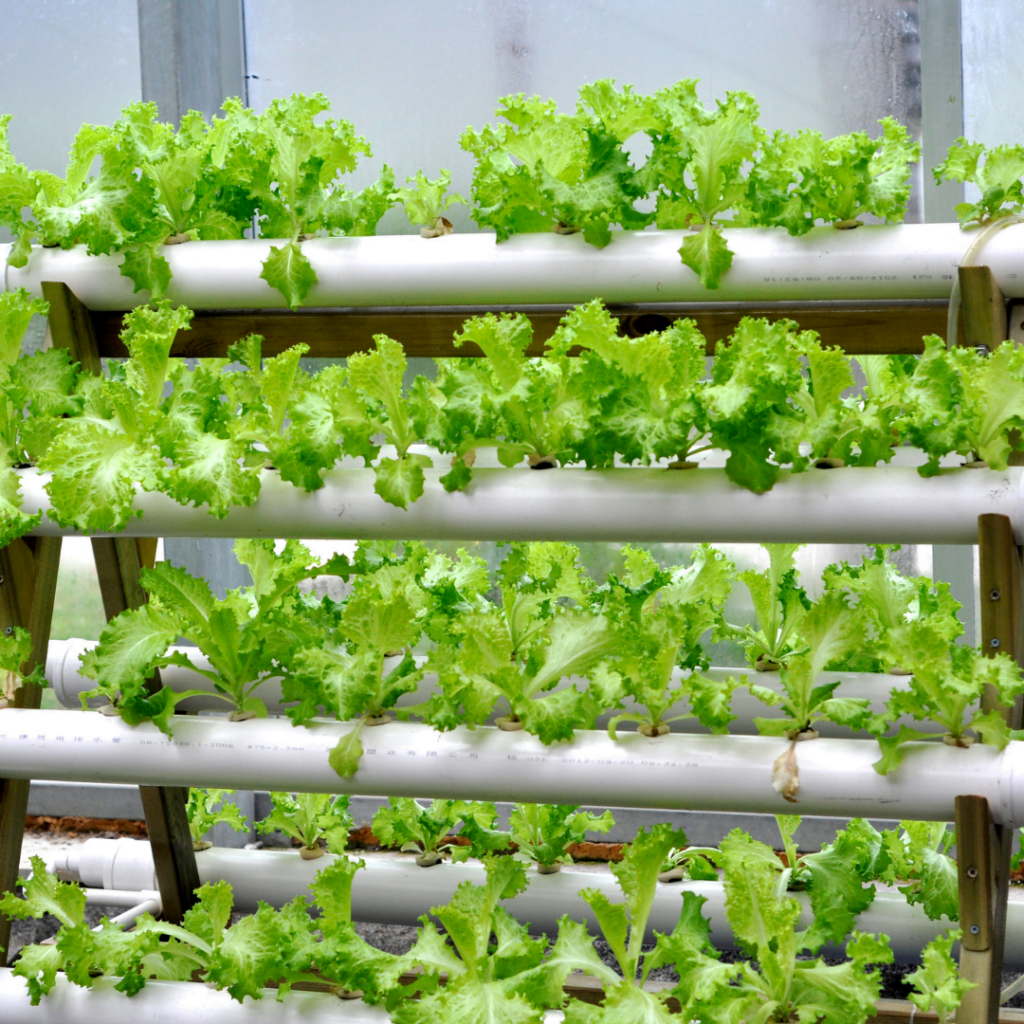
Advantages
- Requires less water. Since water is being constantly circulated.
- Consistent flow also prevents salts accumulating at the roots.
- Ideal for large scale commercial growers due to its modular design.
Disadvantages
- Plants likely to die during power failures. Since only a thin stream of the nutrient solution is being
circulated, during a power failure the plant roots would remain dry and die soon. - Not suitable to grow heavy fruiting plants.
Aeroponics
In an aeroponic system the plant roots are exposed to a nutrient filled mist. In this technique plant roots are not supported by any solid growing medium (such as clay balls, rock wool etc.). Instead, the roots would be dangling in air inside a closed loop system. Hence, a collar (For eg. Made with foam) is to be added to the plants in the net pots to hold the stems firmly.
Plants in net pots are placed on the lid of the reservoir. The reservoir will be filled with the nutrient rich solution. A pump placed inside the reservoir will pump the solution to the sprinkler system. These sprinklers will periodically spray the solution to the dangling roots.
Compared to other hydroponic systems, plants grown aeroponically grow faster as they can absorb nutrients more efficiently. This is simply because the plant roots are exposed to more oxygen.
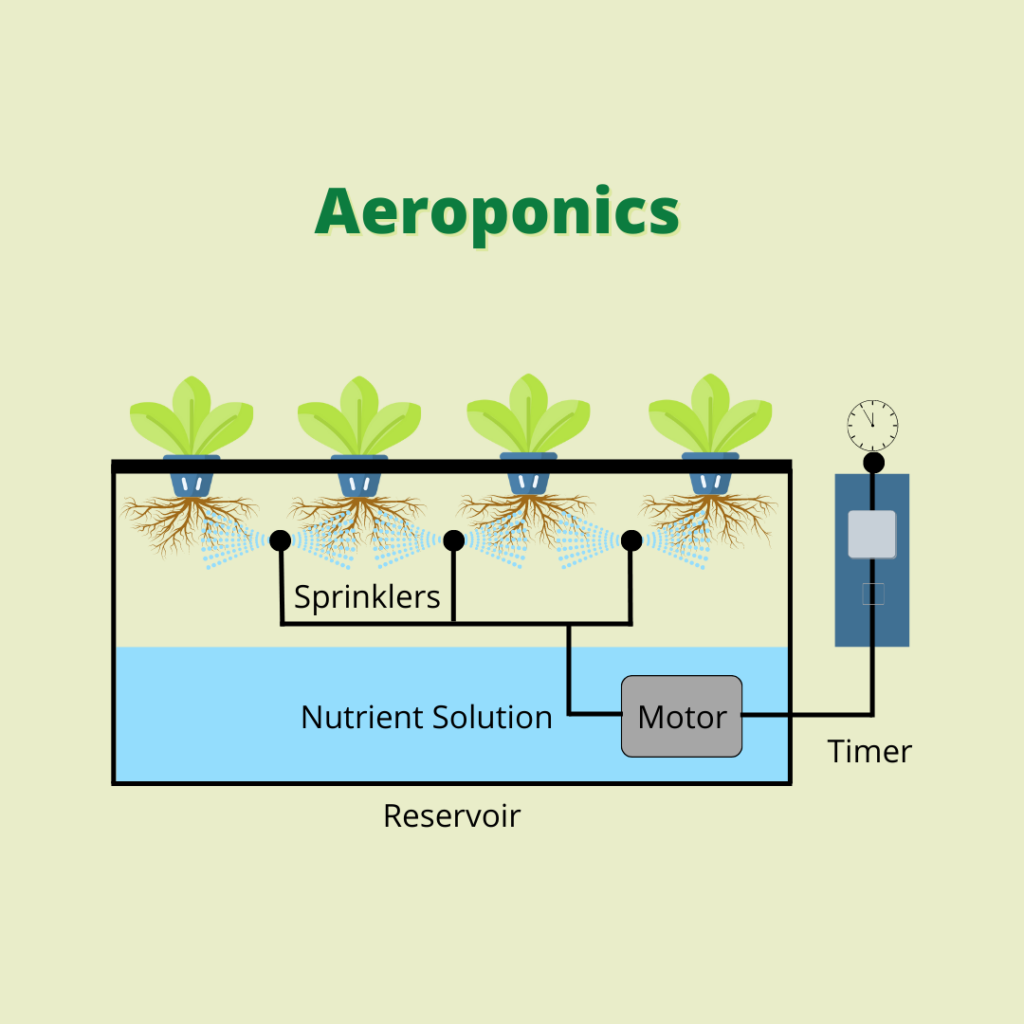
Advantages
- More water efficient compared to other hydroponic systems.
- Supports vertical designs, hence it lets you grow more in less space.
- Faster plant growth and higher yields
- Ideal for commercial growers.
Disadvantages
- Requires high level of precision and maintenance in comparison to other hydroponic systems.
- During power failures, plants will die out quickly as the roots would be left dry instantly.
- Requires technical knowledge to set-up and maintain.
Compact, Easy & Efficient Hydroponic System
All these hydroponic systems have their own set of advantages and disadvantages. If you wish to start growing plants
hydroponically, depending on your budget, time and space you can choose the technique suitable for you.
We have extensively studied each technique before designing Vertigrove-hydro. Hence, we have tried to incorporate
the advantages of each technique and tried to eliminate the disadvantages.



Sustains Power Cuts
One major disadvantage common in all is that during power failures the plants are adversely affected. So, Vertigrovehydro is designed such that it can withstand power-cuts upto 12 hrs. This is because it uses a combination of DWC and NFT techniques, wherein the water is collected in each pot and at the same it’s being circulated as well. The water collected in each pot drips down to the pot below very gradually, hence the pots are able to hold water in it for a long time. This ensures that plants have access to nutrient rich water at all times.
Supports Fruiting Vegetables
Another advantage of Vertigrove-hydro is that, because of its structure, it can easily support fruiting vegetables and creepers. The pots are designed such it’s diameter and height are suitable for the extensive root system of fruiting vegetables.
A person trying hydroponics for the first time might find the concept a little technical and could have a tough time trying to navigate through the pool of resources available on the internet. So, we will handhold you throughout your journey till you are an expert of hydroponics yourself!
If you are interested in setting up your own hydroponic garden in your home balcony,
give Vertigrove-hydro a try!
Vertigrove-hydro is a vertical hydroponic system in which you can grow upto 36 plants in just 4 sqft.
It is designed exclusively for urban dwellers who have space and time constraints.
Contact us here to know more.
